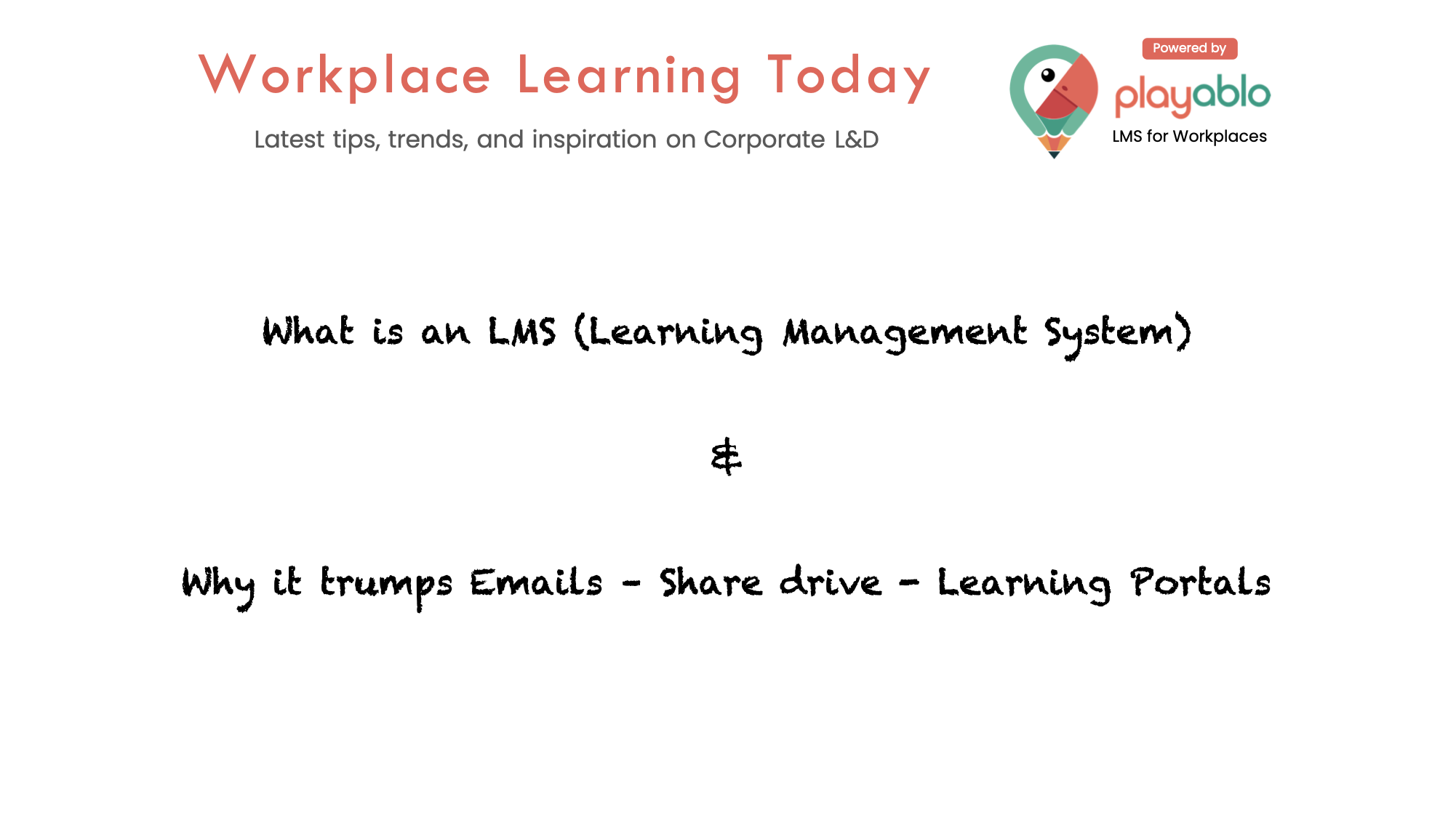If have just heard the term LMS in your workplace and are not sure what it is then you are watching the right video. Let us find out!
Table of Contents
LMS: An introduction

A Learning Management System is essentially software used by organisations to do two basic things:
- Centrally Manage the training needs of the workforce
- Receive feedback on the training conducted so they can improve. Hence the word ‘System’
Now you are thinking, ‘Umm… I can do all that by just creating PPTs/docs and emailing or sharing them with everyone who needs to learn. Much simpler than deploying a whole software system, right?’
Wrong!
The approach above works well when you are a micro-sized organisation. But as you grow, you can no longer keep track of who all has completed the course, understood what was expected (learning outcomes), and received feedback on the quality of the course.
Emails, shared drives, and learning portals work until you are about a 100-200 sized organisation. Beyond that, especially when you employees that are spread out, the process begins to crumble. You cannot afford that because poor training and awareness of your products, solutions, and offerings within your workforce will directly impact your ability to upsell your existing customers and win new ones. That is when you need a specialised software system to manage your workforce training.
What to look for in an LMS?
The answer can be pretty long but here is my short list of the top features that you should look for:
- The training management system should work beautifully on mobile. Your entire staff gets its daily dose of updates on their smartphones and expect learning too to continue.
- It should work offline. Your learners will complete the course at odd times. Their pace and their place. Internet may not always be there.
- It should have a built-in ability to create custom courses. Specialised eLearning course creation software can cost a bomb and require special skills. You need a quick training management system to get that going instead. So, a built-in content management module.
- It should work on a cloud or a SaaS-based solution. Traditional training management systems have needed a fairly large ensemble of in-house tech infra that is not a luxury most growing organisations have. The SaaS-based training management system also saves you money, so you pay for only your number of employees, and you can change your payment plans as you grow.
- It should offer visual analytics on your employees’ learning journey usage, progress, and performance. That is the ONLY way LMS people will be able to make sense of what is working and what needs intervention.
What are the advantages of a learning management system?
Over the traditional learning method, using a training management system provides some significant advantages.
Consistency in education
When you provide your program through an LMS, the content is kept centrally located, giving every student access to the same information, guidelines, and exercises. No blaming outdated readings or lessons from the previous year. Everyone is current.
Simple reporting and tracking
You can effortlessly monitor your pupils’ progress with a training management system. Who completed the program, who is halfway through, and who hasn’t even begun to study may all be seen at a glance.
Make interesting classes
In a training management system, text, graphics, and video can be combined with ease. You cannot do that on paper. Your students will retain their attention and learn more with the usage of more interesting material.
Improved outcomes because of gamification and participation
People will understand more since the learning content is more interesting. Additionally, gamification in a training management system keeps users engaged and motivated.
Conclusion
So that was it. I hope it was of help if you are new to the world of LMS. Visit our website www.playablo.com to know more about what we do and how we might be able to help you in the journey.







Comments are closed, but trackbacks and pingbacks are open.